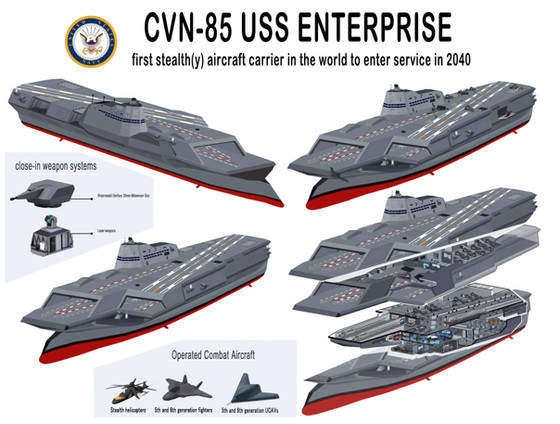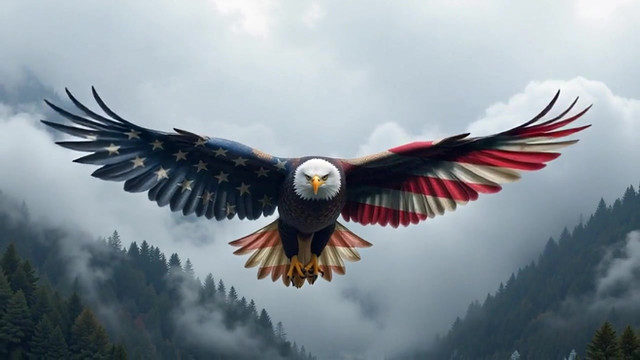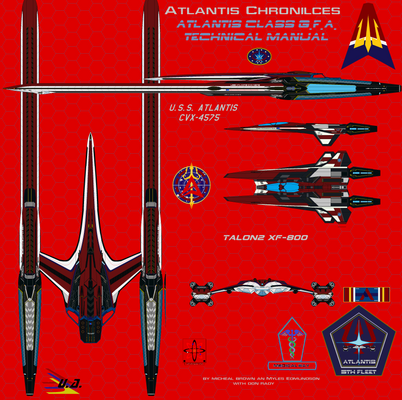HOME | DD
 indowflavour — Stealth F-14NG (Next-Generation) 'Ghost Tomcat'
indowflavour — Stealth F-14NG (Next-Generation) 'Ghost Tomcat'

#aircraft #aircraftcarrier #future #sciencefiction #scifi #stealth #stealthfighter #fighteraircraft #futurewarfare #aircraftconcept #aircraftdesign #aircraftmilitary
Published: 2024-01-04 19:21:34 +0000 UTC; Views: 13935; Favourites: 225; Downloads: 0
Redirect to original
Description
Somewhere in the near future...
“Earlier this month, the US Navy successfully tested it’s new F-14NG (Next-Generation) Ghost Tomcat, a stealth-version of the legacy F-14 Tomcat the US Navy retired in 2006. After the retirement of the F-14 from US Navy-service, Northrop secretly developed a next-generation version of the F-14 it named F-14NG Ghost Tomcat. Although the Ghost Tomcat bares the same type-designation as its older sibling, both aircraft have nothing in common, except for their dimensions. The F-14NG is essentially an entire new aircraft that incorporates numerous next-generation features, from its very design to the engine and avionics.
Like the legacy Tomcat, the Ghost Tomcat has a crew of two: the pilot and the Air Combat Officer, the name of the 2nd crew member who was known as the “Radar Intercept Officer” in the legacy Tomcat. Captain Pete “Maverick” Mitchell, himself a highly decorated former F-14A Tomcat pilot and former Top Gun flight instructor, was the test pilot of the F-14NG during all the flight tests from the US Navy’s latest super carrier USS John F. Kenndy (CVN-79). Top Gun-graduate Lieutenant Bradley “Rooster” Bradshaw flew with him as his Air Combat Officer (ACO). Both are impressed by the F-14NG, which Captain Mitchell said “had little to do with the F-14 Tomcat I flew in the US Navy for almost two decades. Flying the Ghost Tomcat when you’re used to flying the legacy Tomcat, is like playing on a Playstation 5 for the first time when you’re used to play your 1977 Atari 2600 game console all your life. It’s a life-changing experience. The F-14NG takes things to a whole different level and does things, no other Navy-aircraft can.”
ABOUT THE F-14NG GHOST TOMCAT
The F-14NG (Next-Generation) Ghost Tomcat is a fully network-enabled, next-generation multi-role fighter offering a combination of advanced weapons, sensor fusion and data-links. The aircraft is based on the legendary F-14 Tomcat. But even though the F-14NG bares the same type-designation as the legacy Tomcat, it has little in common with the real F-14. Only the aircraft's dimensions are similar to the legacy Tomcat. Other than that, it is a completely new design. The F-14NG is designed to complement the F-35B and -C aircraft of the US Navy and US Marines, not to replace them. The F-14NG is being offered though as a replacement for the older F-18E/F Super Hornet-aircraft the US Navy plans to retire in the coming years.
DESIGN
The F-14NG is a twin-engine, supersonic, stealth multirole fighter and emphasizes low observables, range, advanced avionics and sensor fusion that enable a high level of situational awareness and long range lethality.
The F-14NG has a lambda-shaped wing with two all-moving "ruddervators" (combined rudder/elevator) canted for
stealth. Flight control surfaces include leading-edge flaps, flaperons, and all-moving wingtips (AMTs) autonomously controlled by the aircraft's AI-empowered fly-by-optics Flight Control System (FCS). The latter offers a higher data transfer rate than traditional fly-by-wire systems. Replacing the standard metal wiring with optical fiber cables has the additional benefit of decreasing electro-magnetic disturbances to the sensors in comparison to conventional fly-by-wire control systems. Besides this immunity to electro-magnetic interference and a higher
data transfer rate, fly-by-optics is also a system with less weight because it uses fiber optic cables instead of electrical cables.
The fixed diverterless supersonic inlets (DSI) use a bumped compression surface and forward-swept cowl to shed the boundary layer of the forebody away from the inlets, which form a Y-duct for the engine.
Structurally, the F-14NG drew upon lessons from the F-22 and F-35; composites comprise 35% of airframe weight, with the majority being bismaleimide and composite epoxy materials as well as some carbon nanotube-reinforced epoxy.
The F-14NG's dual Pratt & Whitney F119-200 augmented afterburning turbofan engines, that produce 43,000 lbf (191 kN) of thrust. and are designed for sustained supersonic flight without afterburners, known as supercruise. The engine allows the F-14NG to achieve supercruise speeds of up to Mach 1.8 with full internal payload.
POWER & MANEUVERABILITY
Similar to the F-22A Raptor, the F119s nozzles on the F-14NG incorporate thrust vectoring that enables them to direct the engine thrust ±20° in the pitch axis to give the Ghost Tomcat enhanced manoeuvrability; the nozzles are fully integrated into the Ghost Tomcat's flight controls and vehicle management system. Relaxed stability and triplex-redundant fly-by-optics controls provide excellent handling qualities and departure resistance. Having over double the F-35's internal fuel, the F-14NG has a considerably greater combat radius, while stealth also enables a similar efficient mission flight profile.
Maximum speed without external stores is approximately Mach 1.8 at military power and greater than Mach 2 with afterburners.
MANNED-UNMANNED TEAMING (MUM-T)
One of the core Next Generation-features of the F-14NG is its capability to be an integrated part of manned-unmanned teaming operations (MUM-T). Manned-Unmanned Teaming is the operation of manned and unmanned assets (air, sea and ground platforms, robotics, and multi-domain sensors — including space-based ones —, also referred to as Remote Carriers ) in concert towards a shared mission objective and is considered one of the key innovations for the future of airpower.
The two-seat F-14NG houses the pilot in the front seat of the cockpit, and a so-called Air Combat Officer (ACO) in the rear-seat. The ACO is responsible for a wide range of tasks, including the aircraft’s electronic combat tasks. He is also responsible for managing the Remote Carriers (RCs) during MUM-T missions. The ACO controls the Remote Carriers through a ruggedized control tablet (that is integrated with an advanced Human Machine Interface to provide real-time situational awareness combined with complex behavior tasking), a single Remote Carrier-HOTAS (Hands-On-Throttle-And-Stick) Control Stick, and through voice commands.
ARMAMENT
To maximise the aircraft’s full potential in both air-to-air and air-to-surface operations, the F-14NG can carry a wide range of advanced weapons that include the latest air-to-air missiles (such as the AIM-120D-3 AMRAAM & AIM-260 JATM), air-to-surface missiles (such as the AGM-88E AARGM & SPEAR 3) and (smart) bombs (such as the JDAM-series and AGM-154 JSOW).
To carry these weapons, the F-14NG has three internal weapons bays. In the air-to-air role, the F-14NG can carry four AIM-120D-3s or four AIM-260 JATMs (or a mix of these) in a large main bay on the underside of the fuselage, plus two AIM-9X Sidewinder short-range AAMs carried in two smaller bays on the sides of the fuselage, aft of the DSI inlets; a small bay for countermeasures such as flares is located behind each side bay. An internally mounted M61A2 Vulcan 20 mm rotary cannon is embedded in the airplane's right wing root with the muzzle covered by a retractable door. In “beast mode”, or when stealth is less relevant, the F-14NG can carry additional payload in stealth missile pods mounted underneath its wings. These pods will however add weight and above all, drag, both of which can degrade kinematic performance in terms of agility, acceleration, max. speed, and range.
ACQUISITION
The Secretary of the Navy will decide this month if she will approve the requested acquisition of 108 F-14NG Ghost Tomcats for the Navy as a “stopgap” fighter to replace its oldest F-18E/F Super Hornets within the coming years, until the F/A-XX becomes available.”
Related content
Comments: 11

👍: 0 ⏩: 0

👍: 0 ⏩: 0

👍: 1 ⏩: 0

👍: 4 ⏩: 1

👍: 0 ⏩: 0

👍: 2 ⏩: 2

👍: 0 ⏩: 0

👍: 1 ⏩: 0

👍: 1 ⏩: 0

👍: 1 ⏩: 1

👍: 1 ⏩: 0

























